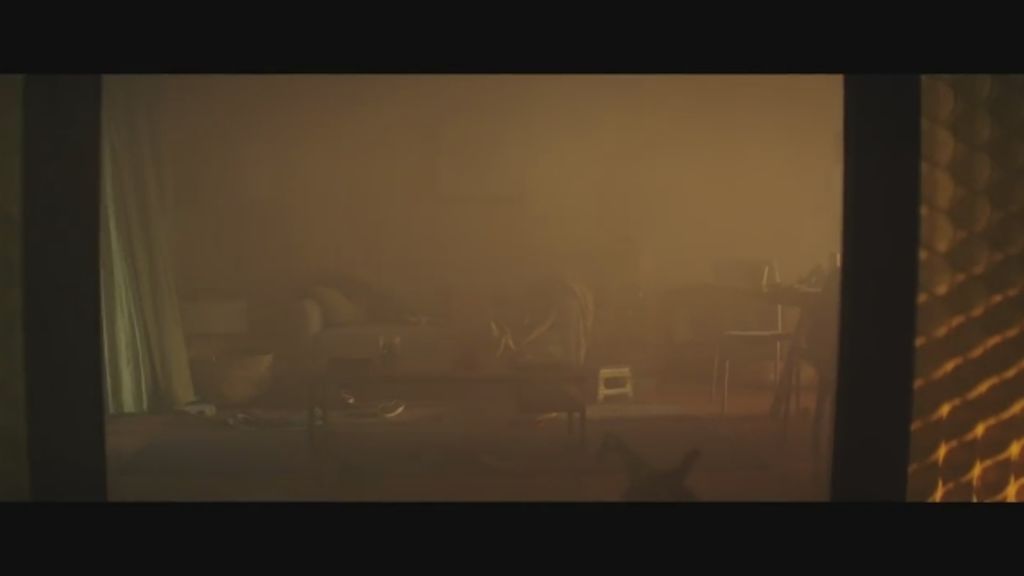Sweetshop Director Creates Chilling Film About Fire
A behind-the-blaze look at Joel Harmsworth's remarkable film for Australian bushfire safety.
Credits
powered by
- Agency JWT Sydney
- Production Company Sweetshop Sydney
-
-
-
Unlock full credits and more with a Source + shots membership.
Credits
powered by
- Agency JWT Sydney
- Production Company Sweetshop Sydney
- Post Production Blockhead
- Editing Company The Editors
- Sound Design Smith & Western
- Editor Bernard Garry
- Art Director Simon Hayes
- Copywriter Giles Clayton
- Executive Creative Director Simon Langley
- Executive Producer Loren Bradley
- Director Joel Harmsworth
- Producer Niki Bentley
- Creative Director Simon Cox

Credits
powered by
- Agency JWT Sydney
- Production Company Sweetshop Sydney
- Post Production Blockhead
- Editing Company The Editors
- Sound Design Smith & Western
- Editor Bernard Garry
- Art Director Simon Hayes
- Copywriter Giles Clayton
- Executive Creative Director Simon Langley
- Executive Producer Loren Bradley
- Director Joel Harmsworth
- Producer Niki Bentley
- Creative Director Simon Cox
This arresting PSA created by JWT Sydney and directed by Sweetshop’s Joel Harmsworth for the New South Wales Rural Fire Service reinforces the point that people in bushfire danger zones must have a plan of escape.
In the lead up to peak bushfire season in Australia, the film Prepare. Act. Survive., asks 'How Fireproof is Your Plan?', using powerful human stories that contrast the destructive power of fire with the dangers of insufficient planning and preparation. And if the fires look terrifyingly real that’s because they were!
Below, Harmsworth discusses the making of the film, and how with the help of the NSW Rural Fire Service, he was able to set controlled fires and use the minimum of visual effects.

What was your reaction when you first read the script?
It was heartbreaking to read, a bushfire would be such an awful thing to have to go through. It also felt important, that it needed to be made. It was a pretty emotional process even in the pitching stage.
What role did the NSW Rural Fire Service play and how did you pick your locations?
The NSW RFS were incredible to work with and helped us through every stage of production - including sourcing locations that allowed us to burn fires for real, finding roads that we could burn off and helping us stage fires with our SFX department - with little to no visual effects.
How did you feel the film could be different to other bushfire warning content around?
The script was interesting in that it wasn’t telling people to clean their gutters and clear trees… Rather it carried a warning through the stories of these three families. In that way, it did feel quite different, something that would stand out and have an impact.

Did you draw on any of your own personal experiences?
I grew up in the bush, boot of the car packed every summer with photo albums, waking up to the sound of the fire warning siren blaring across town, the smell of smoke lingering in the air… Luckily it never reached us, though those bad summer dreams and sinking feeling in the stomach have never gone away.
The desperation is immediately evident in the opening of the film, how did you capture this?
Before throwing our audience into the chaos of surviving the front of a fire, it felt we needed a moment to set the scene. And there is something unsettling about an abandoned living room, half eaten bowl of kids’ cereal on the floor, with the gentle almost calming crackling of fire heard off in the distance. Luckily the location lent itself to bring this idea to life.
And the shift between real time and slow motion? Why did you decide to use this?
Originally, it was written to have the characters talk directly to the audience, breaking the fourth wall, though in the end it felt it was better to stay within the moment as we dive into their inner thoughts.

At times you feel like you’re watching a movie, not an ad. Is this an effect you were trying to achieve?
I wanted to drop our viewers right into each story, like a slap in the face. This may be why it feels bigger and more cinematic, as there’s no real beginning or end to these stories, just the middle – part of far bigger stories, stories of plans that weren't thoroughly considered, decisions being made based solely on luck, in an attempt to stay alive and reach safety. There was also a very deliberate choice in how we framed each scene, moved the camera, and edited the film that was more in line with a longer, languid form of storytelling - than the typical pace of an ad.
How important was the casting? How did you capture the intimacy between them?
Huge efforts were put towards the casting, especially when diving into such intense and intimate moments. We found brilliant actors to work with, and I aimed to reduce everything down to the simplest human instinct that no-one was trying to save themselves – but their loved ones around them.
I also found it fascinating to see how they'd hide their fear and panic, as to protect those around them, then push this right to a breaking point… and that would be right where each scene lands.
Connections
powered by
- Agency JWT Sydney
- Editing Company The Editors
- Post Production Blockhead
- Production Sweetshop Sydney
- Sound Design Smith & Western
- Creative Director Simon Cox
- Director Joel Harmsworth
- Executive Creative Director Simon Langley
- Executive Producer Loren Bradley
Unlock this information and more with a Source membership.
)











